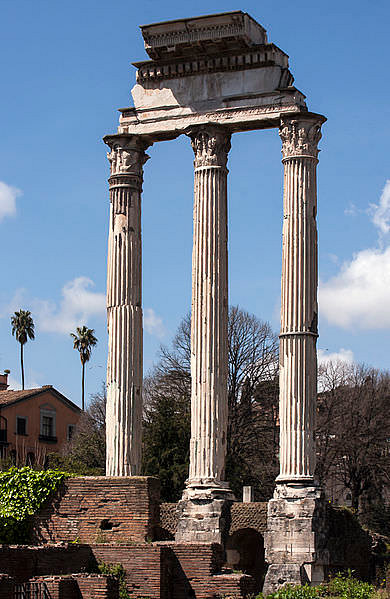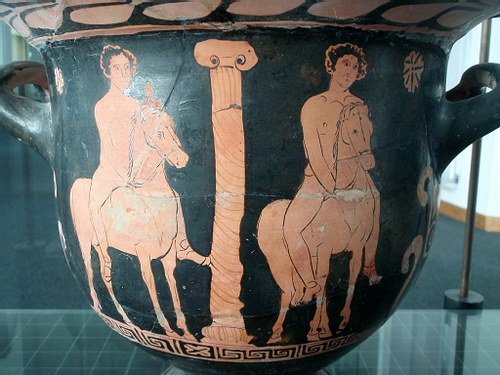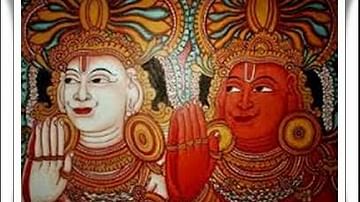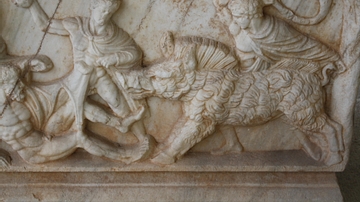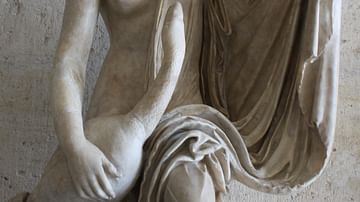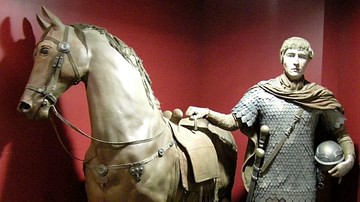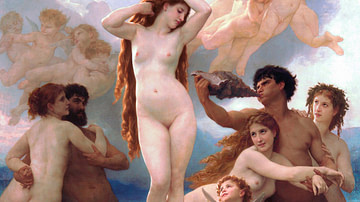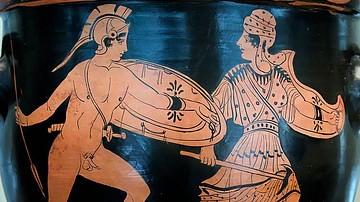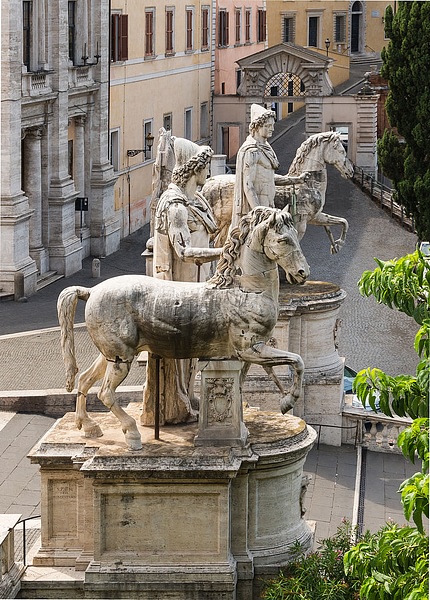
Castor and Pollux (the Dioscuri) are figures from Greek and Roman mythology considered the twin sons of Zeus or Jupiter. Semi-divine figures, the twins were credited with the role of saving those in trouble at sea or in grave danger in war. They were particularly associated with horses and sports.
The Dioscuri, known to the Greeks as Kastor and Polydeukes, were linked with Sparta especially and had their own temples in Athens and on Delos. The Dioscuri continued to be important in the Roman republic period and were the patrons of the Roman knights. Castor and Pollux played an important role in martial ceremonies into the Roman imperial period.
Names & Family
The original Greek name of the twin brothers was Kastor and Polydeukes, Latinised to Castor and Pollux. Together they are known as the Dioscuri from the original Greek form, the Dioskouroi, meaning 'youths of Zeus', as the great god was considered their immortal father after he disguised himself as a swan and seduced Leda. The twins were born from an egg in one of the many versions of the myth. Pollux was considered immortal whilst his brother was mortal as his human father was Tyndareus, the king of Sparta, who also slept with Leda on the same night, hence the confusion over the paternity of the twins. This also explains their other name, the Tyndaridae. Then again, in Homer's Iliad both are treated as dead, explaining their association with the Underworld. The matter is partially resolved in Homer's Odyssey where he explains that they alternated each day, one twin brother being alive, the other dead and then vice-versa the next day. This idea is also presented by Pindar who states that the twins shared their immortality and switched daily between Mt. Olympus and Hades.
Mythological Adventures
Castor and Pollux were involved in several famous episodes from Greek mythology. They accompanied Meleager on his Calydonian boar hunt and went with Jason and the other Argonauts on their successful search for the Golden Fleece. It was during this latter adventure that Pollux out-boxed the prodigiously strong Amycus, king of the Bebryces.
When their sister Helen was abducted by Theseus, the brothers brought her back to Sparta from Attica and took Aethra, Theseus' mother, for good measure. A final episode was when the brothers, initially on a cattle-rustling expedition, abducted Phoebe and Hilaeira, the daughters of Leucippus. They had to fight to keep their prizes, though, with the girls' cousins Idas and Lynceus, to whom the girls had been betrothed. Only Pollux survived the clash and, thus, the necessity to share his immortality with Castor is explained. The fight between the rival families is, perhaps, a mythological explanation for the real feud between long-time rivals Sparta and Messenia.
Associations
The twins were considered the protectors of the home and hospitality, oaths, friendship, and sporting activities. They were the patrons of athletes. Castor was held to be a skilled horse-tamer while Pollux possessed great boxing skills. Both were thought to protect warriors in battle and sailors at sea, especially those in life-threatening situations, and they would often appear in person at such times. At sea they were thought to appear in the form of St. Elmo's fire.
In Italy the cult of the twins went back to the mid-6th century BCE. For the Romans the twins were the offspring of Jupiter and Leda; both were particularly associated with cavalry and Castor was adopted by the Roman knights (equites) for their patron. In addition, the twin brothers were represented as the two brightest stars in the constellation Gemini. Other associations were the dokana symbol (two vertical wooden posts connected by two horizontal beams), pairs of amphorae, snakes, and bossed shields.
Worship & Temples
Castor and Pollux were important across Greece but especially the Peloponnese. Sparta, where warfare was fundamental to the culture, claimed the twins were from the city, but they were also popular in Lokris and Athens. In the latter city they were known by the name Anakes and given a temple on the slopes of the acropolis which was used as a mustering point for hoplites.
A Doric temple at Agrigento on Sicily has traditionally been linked to the Dioscuri, but there is no direct evidence. Built between 480 and 460 BCE, it originally had 6 columns on each facade and 13 along the longer sides. More definitely, the Dioscuri had a sanctuary dedicated to them on the island of Delos.
A temple of the Dioscuri was dedicated in the Forum of Rome by the Roman general Aulus Postumius following his victory over the Latins at the Battle of Lake Regillus in 484 BCE. During the battle two young men riding white horses were said to have appeared and guided the Romans to victory and then were seen again after the battle watering their horses at the Juturna Spring in Rome, hence the subsequent dedication to the famous cavalry twins and choice of location for the temple next to the fountain in the Forum. Every 15th of July the temple was the focus of a cavalry parade - the transvectio - of 5,000 men led by two impersonators of the heroes who commemorated the victory at Regillus.
After a fire destroyed the original, a new temple was built on the site in the 1st century BCE. The temple was a massive structure measuring 32 x 50 m and reached a height of almost 19 m. The facades had 8 Corinthian columns whilst the sides each had 11. The temple served as the office of weights and measures with an additional function as a bank. Three of its tall columns still stand today. At the same time, Augustus made the cult of Castor and Pollux an official imperial one, associating his heirs with the twins, and initiated a new feast day for the pair on the 27th of January.
Rome also had a temple dedicated to the Dioscuri in the Circus Flaminius, and there were temples at Assisi, Cori, Naples, and Tusculum. Tables of food were set out at such temples (theoxenia), as they were in private homes too, and offered to guests and travellers to gain favour from the twins in return for their protection.
How were Castor & Pollux Represented in Art?
The Dioscuri appeared in the relief sculpture decorating the treasury of the Sicyonians at Delphi, which was built in the 6th century BCE. The sculpture showed episodes from the Argonaut and Leucippus stories. The twins appeared on Attic black-figure pottery, typically in scenes with Leda, the abduction of Leucippus' daughters, and offering tables for guests and travellers. Many Roman coins depicted the pair as cavalry riders. In figure sculpture, the twins proudly stand today either side of the steps leading up to the Capitoline Museums in Rome. Each figure stands by his horse, and although much restored in the 16th century CE, they incorporate fragments found at the site of the Temple of Castor and Pollux in the Forum.
